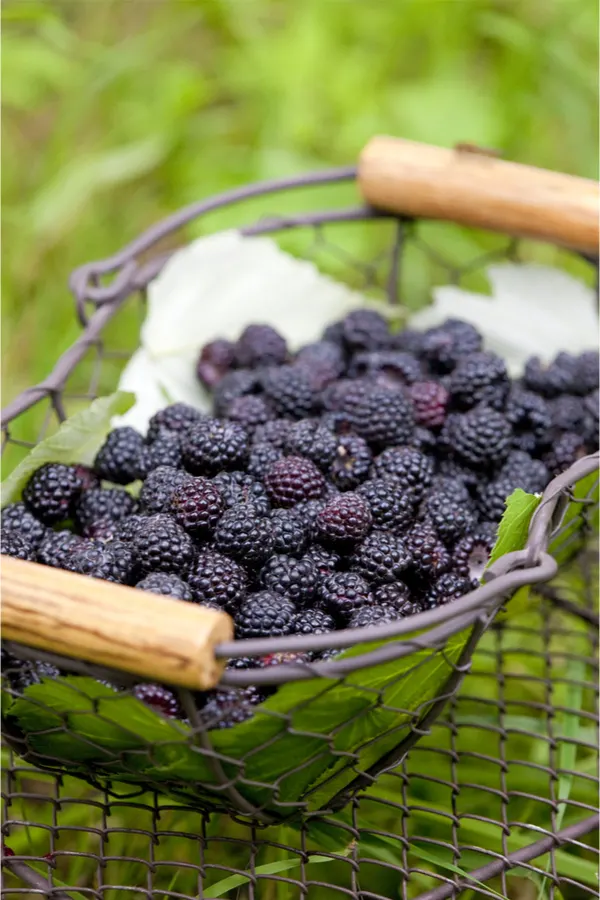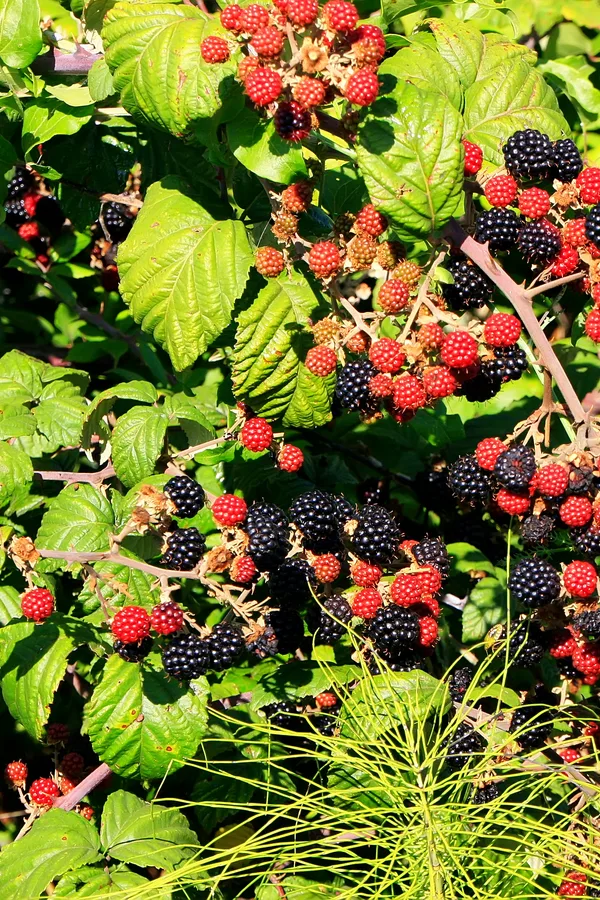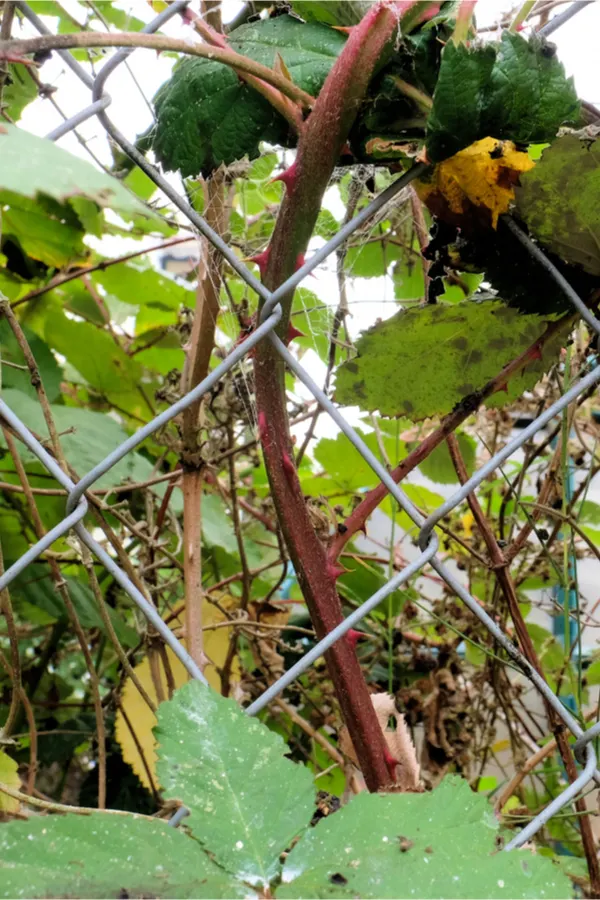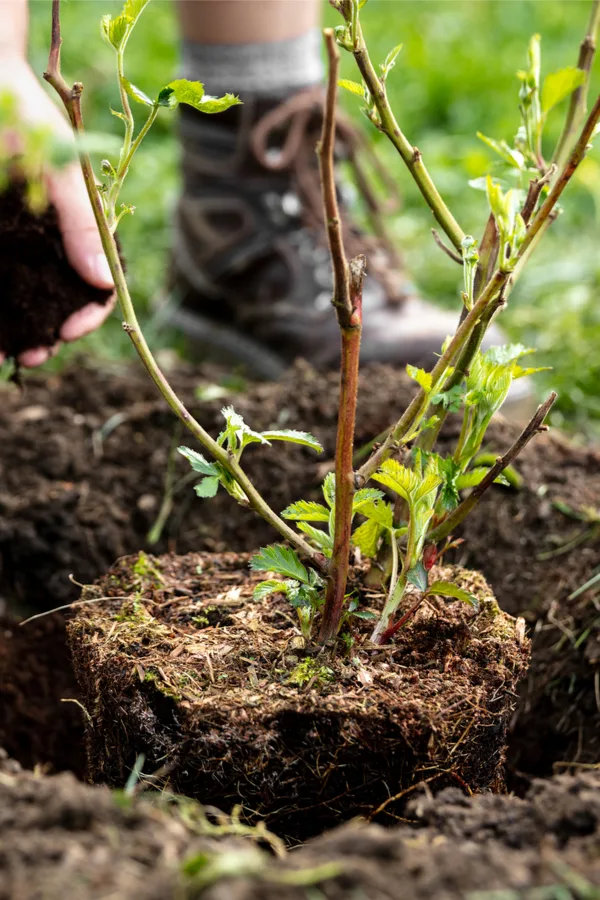If only as a child I could have known how easy it was to grow delicious blackberries right in your backyard.
I still remember as a youngster suiting up in a long sleeve shirt, jeans, gloves and boots to head out to pick wild blackberries. Right smack dab in the middle of the scorching summer heat.
The funny thing is, I was not coerced by my parents at all to perform the task. I wanted to! That is because the reward was always a fresh baked blackberry pie or cobbler prepared oh so lovingly by my mom. Oh how that memory still is as fresh in my mind as the taste of those incredible desserts.
It certainly wasn’t easy to pick them. There was, of course, the usual blistering heat of a hot summer day. And the thorns that always seemed to find a way through all of that protective gear.
But all of the arm and leg coverings were a complete necessity. My brother and I would have to go through poison ivy filled thickets to find the delicious berries. All without knowing what creature you might accidentally step on in the process.

Growing Blackberries Today
We knew where to head for the best berries. And for some reason, it always seemed like the largest, juiciest berries were the hardest to get to in the middle of a patch of dense thickets. But it was always worth it in the end.
Especially when our pails would overflow with the tender, sweet blackberries. A quarter of which by the way never even made back to the house because we would eat them while picking.
I laugh thinking back today whenever we head out to our backyard to pick our summer crop of thornless blackberries. Oh if I had only known you could grow them far easier that having to pick them out in the wild back then!
The truth is I wouldn’t give up those memories for anything. And, I will still argue that wild blackberries are in my mind still a tad bit more packed with flavor.

But that doesn’t mean you can’t grow incredibly delicious and nutritious blackberries in your backyard. And with much less work, and a far larger harvest! With that in mind, here is a look at how to plant, grow and maintain a great perennial crop of blackberries in your backyard for years to come.
How To Plant, Grow And Maintain Blackberries
Growing Blackberries
Blackberries are quite an easy perennial crop to grow and maintain. All you really need is a little room and a bit of support. And making them even more attractive, a single planting can produce a viable harvest for 20 years or more. Not a bad return for a little bit of planting work! (Also see our article : How To Grow Raspberries)
Blackberries are a member of the bramble family. Although brambles perform well in many soil types, they do prefer a slightly acidic soil. In fact, that is one of the reasons you often see blackberries growing wild so well along fence lines and at the edges of woods.
The soil in these locations tends to be a bit let rich, with a lower PH. But with that said, most backyard soils can still grow them quite effectively without trouble.
There are two basic types of blackberry plants, trailing and erect. Trailing varieties are great if you have a fence line or trellis system to provide support. Trailing varieties can grow 20 to 30 feet long, and can be trained quite easily.

Erect varieties on the other hand grow their fruit on 3 to 4′ tall canes. They are wonderful for small spaces, or for planting up against fence lines or along a back row of bed spaces. We actually have a few of each, and both produce delicious crops.
Planting and Support – Growing Blackberries
When planting either variety, it is best to plant blackberries in a slight mound, about 2 inches above the soil line. Trailing varieties should be spaced 6 to 8′ apart. Erect types should be spaced 1′ apart. The slightly raised mound helps to keep the crowns from becoming too wet, and reduces the chance of any rot.
When planting, work a shovelful or two of compost into each hole as you set the plants. A thin 1 to 2″ layer of compost on top as a mulch around each newly planted bramble will help conserve moisture and provide a little early nutrition to the plant as well.
Do not work in additional nutrients into the soil beyond the compost. As mentioned before, they actually grow better with less nutrients that too many.
Blackberries generally will not fruit during the first year growing year. Brambles actually produce on two-year canes. One cane grows the first year, then the fruit canes will grow the next. It is only during the first year that you will not have fruit.

Each year after the first, fruiting canes for the next year’s growing season will be produced. If planting a vining variety, you can train the vines upward by tying them off with fruit or garden ties. A small piece of cloth will also do the trick.
What To Grow
We grow a vining variety known as Natchez Thornless, and an erect variety called Apache Erect. Check with your local nurseries and greenhouses to find out what grows best in your area.
It is far better to purchase a local variety that is used to growing in the soil of your area. Plants adjust over time to soil types, and selecting a proven winner in your area is always the best way to go.
We used a grapevine trellis wire and post system to train our vining varieties, but an arbor or fence woulds work just as well. If planting an erect variety, we have found it is still nice to have a bit of support to the keep the canes from bending over with fruit.
As an alternative, a simple wood post with two wire or rope supports at 2′ and 4′ off the ground will work as well. Simply train the vines as they grow by tying off with loose string or rope.
Annual Maintenance – Growing Blackberries
Your 1st year plantings will not need to be pruned back at all. But as the blackberries grow from year 2 on, simply remove old shoots that have died off each fall. This will be the shoots that produced the fruit for the year.
This allows for new shoots to come on the following spring for another great harvest. In general, blackberries do not need much fertilizer to continue to perform. A simple top dressing of compost around each plant every spring is more than enough to provide them with all of the nutrients they will need.
If you live in an area with extremely cold winters, you can apply a few inches of straw over the crowns to help insulate and protect them from deep freezes and quick thaws.
Here is to planting and growing your own delicious crop of blackberries this year, and enjoying the fruits of your labor for years to come! Happy Gardening – Jim and Mary.
Jim and Mary Competti have been writing gardening, DIY and recipe articles and books for over 15 years from their 46 acre Ohio farm. The two are frequent speakers on all things gardening and love to travel in their spare time.
As always, feel free to email us at thefarm@owgarden.com with comments, questions, or to simply say hello! You can sign up for our free email list in the subscribe now box in the middle of this article. Follow us on Facebook here : OWG Facebook. This article may contain affiliate links.
